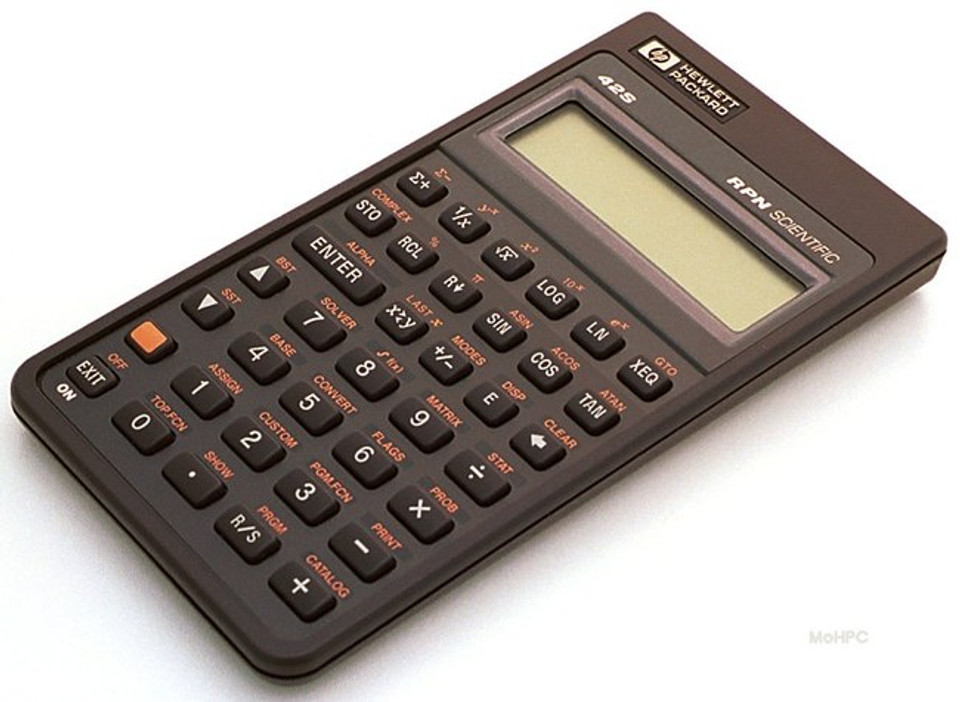

Internal picture showing other side of PCB with the CPU visible through the center hole (~74K) Image by Paul Brogger.Message #1 Posted by e.young on, 4:12 p.m. Internal picture (PCB removed) showing back of keyboard and LCD (~28K) Image by Paul Brogger. Batteries and IR transmitter are at the top. Internal picture showing PCB attached to keyboard attached to front of calculator (~53K) Note CPU held in place by plastic backbone. Some extensions of the HP-42S such as its larger display, larger alpha register, greater numeric range and precision, and its support of complex numbers could cause problems for a few HP-41C programs, (The latter could be worked around by disabling complex results.) brought up a menu of storage locations including the IND item.) Variables and the stack registers could also be used for indirection so a sequence like STO. For instance to store the number in X in the register indicated by the value held in register 12, the user would press STO.

Indirection was achieved via the IND modifier. Programming was essentially the same as the HP-41C with the following exceptions. Matrices could be real or complex and matrix functions included: To enter values, the user pressed the EDIT key and then used the arrow keys and GOTO to move about and pressed EXIT when finished. A new Matrix could be created in the X register by entering its dimensions on the stack and pressing MATRIX NEW. Matrices could be stored on the stack or in variables. A new feature on this model allowed both polar and rectangular forms of complex numbers. To enter a complex number, two real numbers were entered and COMPLEX was pressed to convert them to a single complex number. Complex NumbersĬomplex numbers were integrated into the calculator such that they appeared naturally when required (for example the square root of a negative number.) Each complex number required a single stack element or variable and was display like X iY. ASTO and ARCL was used to move data between the alpha register and other registers and variables. The Alpha register held up to 44 characters. Characters could be typed into the Alpha register, used to specify a variable name or a program label or entered as program instructions. Like several earlier Pioneers, the HP-42S allowed alpha data to be entered via an alpha menu. Menus could lead to submenus and where most Pioneers had a clear key, this model had an EXIT key to return to the previous menu. Mode settings were indicated by a square dot. Multiple line menus could be traversed by using the up/down keys. The calculator had a sophisticated menu system. Strings of up to 44 characters were allowed in the Alpha register. (However, the registers were really just a matrix named REGS so the user could make all the storage registers complex.) Strings were still limited to 6 characters as on the HP-41C when stored on the stack, in a register or a variable. Variables were more powerful than registers because they could hold complex numbers and matrices. (Or two digits could be entered to select a register.) The variable could be selected from the menu or typed alphanumerically. When STO or RCL was pressed the catalog of variables was displayed. Higher numbers required indirect access.) (Only registers numbered 00-99 could be accessed directly. Initially, 25 numbered registers were allocated but this number could be changed to use as much memory as the user required. The HP-42S had numbered storage registers and named variables. Binary, octal, decimal and hexadecimal bases with integer arithmetic and logic functions.A beeper which optionally sounded on errors or under program control.Statistics (including curve fitting and forecasting.).Basic scientific functions including hyperbolics.Obviously, many of these were not printed on the keyboard but could be accessed by catalog, by typing their name after the XEQ key or by assigning them to the custom menu.

The calculator had over 600 built-in functions.


 0 kommentar(er)
0 kommentar(er)
